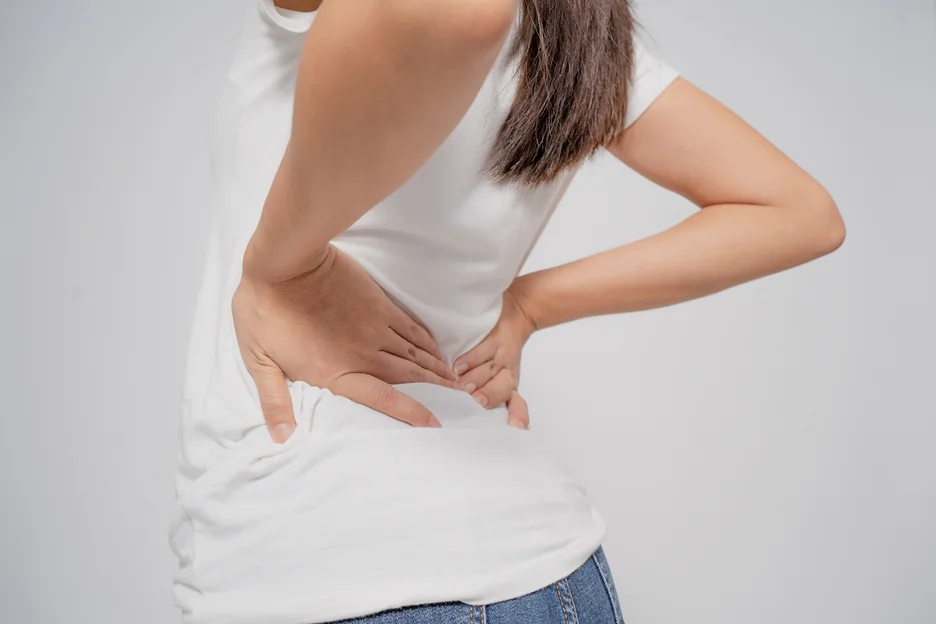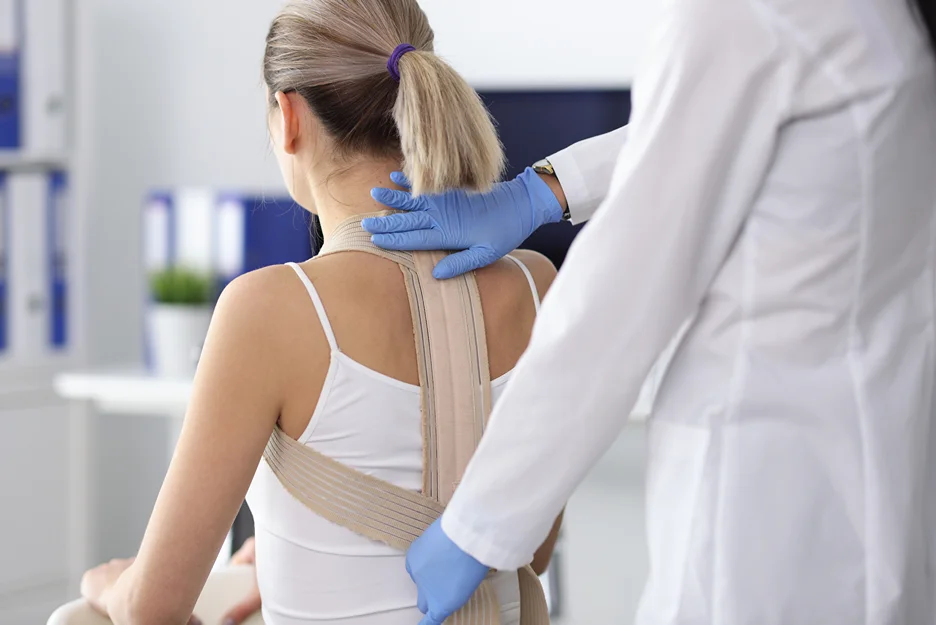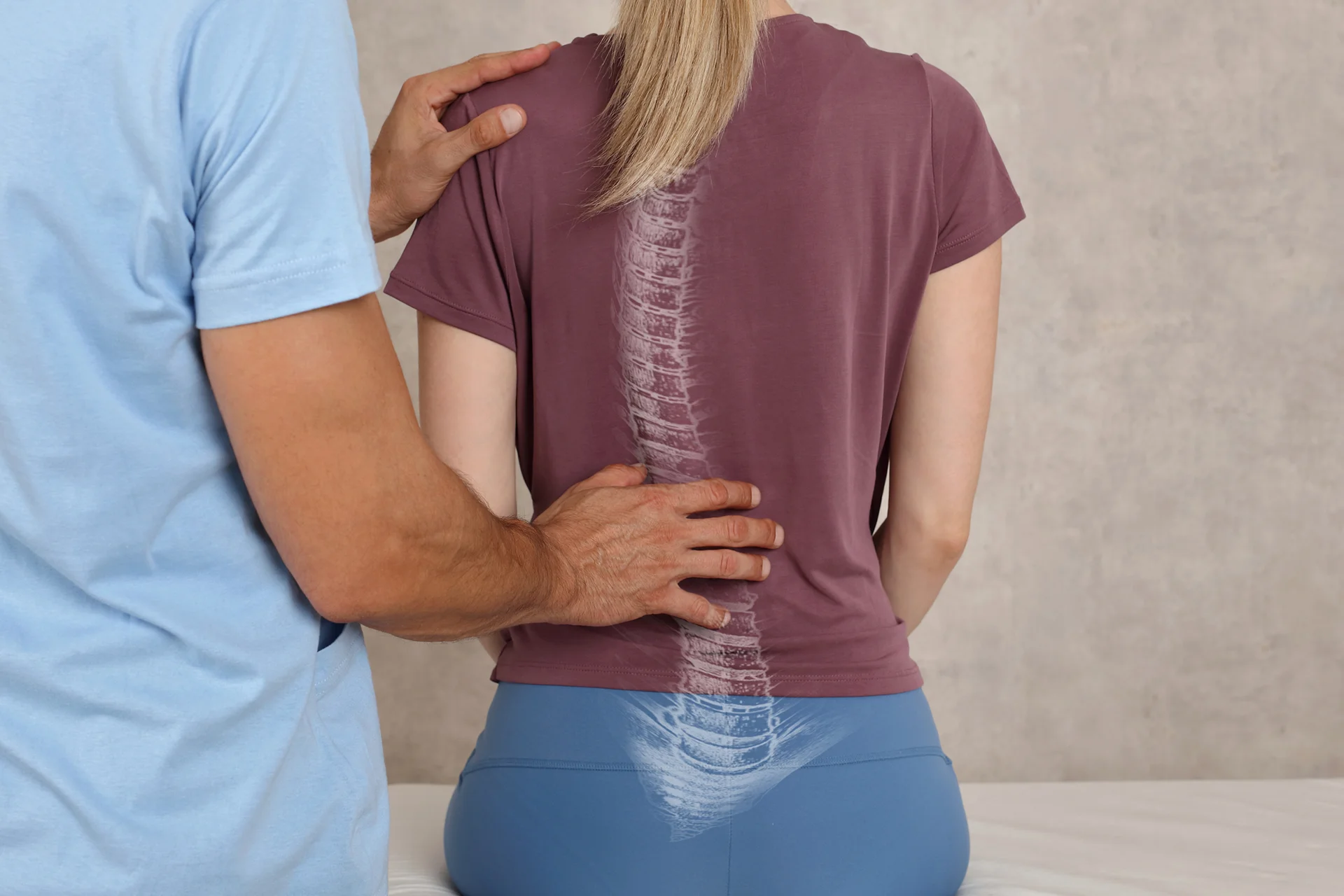Living with constant pain is exhausting. The sharp, shooting agony that radiates from your lower back down your leg steals your energy, robs your joy, and keeps you from the activities you love. You wince with every step, and even simple tasks feel impossible. What’s causing this misery? It could be scoliosis-induced sciatica.
Scoliosis can put pressure on the sciatic nerve, triggering severe sciatic pain. But you don’t have to suffer indefinitely. In this article, learn what causes scoliosis to ignite sciatica, how to get an accurate diagnosis, and most importantly, find hope through proven methods to ease your discomfort.
What is the Connection Between Sciatica and Scoliosis?
Scoliosis is an abnormal sideways curvature of the spine that can put direct pressure on the sciatic nerve. This largest nerve in the body runs from the lower back, through the hips and buttocks, all the way down the legs. When scoliosis causes the spine to curve, it can pinch the sciatic nerve as it passes through. Up to 43% of scoliosis patients experience sciatica as a result.
The sciatic nerve roots beginning in the lower back are especially at risk. As scoliosis progresses, the spine compresses down on these nerve roots. This results in sciatica – radiating pain along the path of the sciatic nerve, down the back of the leg.
What Are The Symptoms of Sciatica From Scoliosis?

Common symptoms of sciatica caused by scoliosis include:
- Lower back pain that shoots or radiates down one or both legs
- Numbness, tingling or weakness in the leg, foot, knee or hip
- Pain that worsens when sitting, standing, bending, coughing or sneezing
- Sharp, burning or electric shock-like sensations down the leg
- Muscle weakness that causes difficulty moving the leg or foot
Any condition that puts pressure on the lower spinal nerves can cause sciatica, including scoliosis. Seek prompt medical attention if symptoms are severe or sudden, as this may indicate a more serious nerve injury requiring emergency treatment.
What are the Risk Factors for Developing Sciatica with Scoliosis?
Certain factors that raise your risk of developing sciatica if you have scoliosis include:
| Risk Factor | Description |
| Age | Older adults are more prone to spinal conditions like degenerative scoliosis. |
| Pre-existing mild to moderate scoliosis | Puts pressure on nerves, increasing sciatica risk. |
| Prior spine trauma from injury or accident | Can impinge spinal nerves. |
| Genetics | Hereditary connective tissue disorders associated with scoliosis. |
| Being overweight | Excess weight overworks the spine. |
| Spinal tumors | Although rare, may compress the sciatic nerve. |
Does Scoliosis Exacerbate Sciatica Pain?
Yes, the abnormal curvature of the spine caused by scoliosis can definitely exacerbate sciatic nerve pain. As the spine curves and rotates, it squeezes down on the nerve roots and sciatic nerve. This compression and pinching of the nerve is what leads to symptoms of sciatica like:
- Burning pain in the buttocks, hip or back of the leg
- Numbness and tingling down the leg
- Muscle weakness making it difficult to move the leg
Studies show that adult scoliosis patients in particular often seek treatment for back pain caused by sciatica. In a 50-year follow-up study of patients with adolescent idiopathic scoliosis, 61% of them reported chronic back pain.
Scoliosis and sciatica have a bidirectional relationship, with each condition capable of exacerbating the other. Careful management of both conditions in tandem is crucial for effectively alleviating symptoms and preventing further progression.
How is Sciatica Treated in Patients with Scoliosis?
For scoliosis patients with sciatic nerve pain, treatment options range from non-surgical methods like physical therapy to surgery in more severe cases.
Physical therapy involves specific exercises to strengthen back and core muscles. This provides more support to the spine and takes pressure off compressed nerves.
If leg pain persists despite physical therapy, surgery may be recommended. This includes spinal fusion to stabilize the spine, or lumbar decompression to create more space and relieve pressure on nerve roots. According to a study, the survival rate of primary scoliosis surgery in adult patients is 61%.
For teens with sciatica and scoliosis, treating the underlying cause (like a herniated disc) is prioritized over the curvature itself. Adults with degenerative scoliosis may benefit from spinal decompression and fusion procedures if conservative treatments fail.
The best treatment plan depends on each patient’s unique scoliosis type, location, and symptoms. Our network of top specialists at Kaly can help diagnose the cause of your sciatica and create a tailored treatment plan.
What Are the Treatment Options for Sciatica and Scoliosis?
For patients dealing with both scoliosis and sciatica, these are some of the most common and effective treatment approaches:
| Treatment Type | Option |
| Non-surgical | Physical therapy utilizing personalized exercises and stretches |
| Chiropractic adjustments to improve spinal alignment | |
| Bracing for support and prevention of worsening | |
| OTC or prescribed medications to relieve nerve pain | |
| Steroid injections to reduce spinal inflammation | |
| Lifestyle changes like weight loss, posture correction, and activity modification | |
| Surgical | Spinal fusion to stabilize the curved spine |
| Decompression surgery to relieve pressure on nerve roots | |
| Discectomy to remove herniated discs impinging the sciatic nerve | |
| Neurostimulation implants to block pain signals |
Can Scoliosis Surgeries Trigger Sciatica?
For some patients, scoliosis correction surgery aimed at realigning the spine can potentially trigger or worsen sciatic nerve pain. Here’s why:
- Scoliosis indirectly compresses the sciatic nerve through the curved spine and bony impingements.
- Severe scoliosis often causes sciatica symptoms before surgery.
- Scoliosis surgery, such as spinal fusion, may manipulate or move nerve tissues already irritated.
- This surgical nerve disturbance could then exacerbate compression, sparking new sciatica symptoms.
- Post-surgical sciatica is not common but the risk does exist, especially if nerve impingement is already present pre-surgery.
Thorough pre-surgical testing, an experienced surgical team, and careful post-op rehabilitation can help minimize risks of developing sciatica pain after scoliosis procedures.
Are There Exercises to Alleviate Sciatica for Someone with Scoliosis?
While they cannot correct the scoliosis, certain exercises and stretches may provide some pain relief from sciatica:
| Recommended Exercise | Details |
| Core strengthening exercises | Exercises like planks and bridges to take pressure off nerves |
| Stretches | Stretches for the hips, hamstrings and lower back to relieve tight muscles |
| Low-impact cardio | Cardio like walking, swimming or biking to improve circulation |
| Yoga poses and Pilates moves | Movements focused on alignment, flexibility and breathing |
| Back strengthening exercises | Back exercises under a physical therapist’s supervision |
A customized exercise program that takes spinal curvature and problem areas into account is key for the best results. Check with your doctor to find out if physical therapy could help manage your sciatica symptoms.
Does Correcting Scoliosis Help with Sciatica?

Treatments aimed at realigning the spine and correcting the scoliotic curve may relieve pressure on the sciatic nerve, reducing associated leg pain and symptoms. However, while chiropractic manipulation can provide temporary relief, it does not address the underlying spinal misalignment causing the issues.
More effective approaches include:
- Individually tailored exercise programs to strengthen back muscles
- Bracing for support
- Surgery like spinal fusion for severe curves
Relieving the scoliosis and resulting nerve compression is key to finding lasting relief from sciatica.
Does Posture Correction Help in Reducing Sciatica for Scoliosis Patients?
Improving posture through targeted exercises and bracing can help take pressure off the sciatic nerve and offer pain relief for those with scoliosis.
- Exercises that strengthen core muscles lead to better spinal alignment and support, reducing nerve impingement. Mild scoliosis curves may also be minimized with improved posture over time.
- Wearing a supportive brace improves posture by keeping the spine aligned in a neutral position. This reduces asymmetry from the scoliotic curve and resulting nerve compression.
Best Sleeping Position for Sciatica and Scoliosis Patients
The ideal sleeping positions to minimize back and sciatic nerve pain from scoliosis include:
| Tips for Sleeping Positions to Relieve Back Pain |
| Side sleeping with a pillow between knees to maintain alignment |
| Back sleeping with pillows under the knees to reduce curvature |
| Avoiding sleeping on the stomach which twists the spine |
| Choosing a medium-firm mattress that supports the spine |
| Trying a knee pillow or lumbar support to take pressure off nerves |
| Placing a pillow under the lower legs if sleeping on the back |
Consult your health provider to find the optimal sleep position based on your scoliosis type and location of the spinal curvature. Proper body alignment and cushioning pressure points are key to reducing nighttime sciatica and back pain.
Can Sciatica and Scoliosis Be Prevented?
While scoliosis and sciatica cannot always be prevented completely, certain measures may reduce your risks:
For sciatica
- Core strengthening exercises to support the lower back
- Improving flexibility through stretching
- Maintaining proper posture and body mechanics during activities
- Losing excess weight to avoid overburdening the spine
- Choosing ergonomic seating and proper lifting techniques
For scoliosis
- Early screening in children to detect signs before pubertal growth spurts
- Bracing for young patients with idiopathic scoliosis to prevent worsening
- Targeted physical therapy exercises to halt progression
- Good posture and balance training as preventative measures
Conclusion

Living with chronic back and leg pain is challenging and life-disrupting. At Kaly, our mission is guiding people like you to top specialists who can provide answers and lasting relief. By connecting you directly with renowned scoliosis and sciatica experts across the country, we make specialized treatment accessible for your condition.
If you’re suffering from scoliosis-related sciatica, we encourage you to reach out. With Kaly as your healthcare partner, there’s hope for getting back to pain-free living. Sign up today to get started. Your journey toward recovery and mobility starts now!
FAQs
Can chiropractic care help with sciatica and scoliosis?
Yes, chiropractic adjustments can provide short-term relief and improved mobility. Long-term relief works best with exercise and other treatments.
Can wearing heels worsen sciatica in someone with scoliosis?
Yes, high heels strain the spine, worsen pain and curvature. Opt for low heels and proper footwear to support alignment.
Can pregnancy exacerbate sciatica in women with scoliosis?
Yes, weight gain, posture changes, and uterus pressure on nerves can worsen scoliosis and sciatica. Specialized prenatal care is important.
Is yoga beneficial for someone with scoliosis and sciatica?
Yes, gentle, therapeutic yoga can strengthen the back, improve posture and flexibility, and decrease pain.
How do sciatica and scoliosis affect elderly individuals?
Age-related changes worsen pain, mobility, balance and independence. Early intervention and tailored treatment are key.
What natural remedies can help with sciatica and scoliosis?
Natural remedies like targeted exercises, heat/cold therapy, massage, supplements, posture correction, back support, and stress management help complement conventional sciatica and scoliosis treatment. A holistic approach can aid pain relief and overall wellness.
What medications are used to treat sciatica and scoliosis?
Medications used for sciatica and scoliosis include NSAIDs, muscle relaxants, steroid injections, antidepressants, anticonvulsants, and short-term opioids. These aim to reduce inflammation, muscle spasms, nerve irritation, and neuropathic pain. Medication is often combined with other treatments for optimal pain relief.
